It’s possible to cook steak at home, especially if there’s a special occasion. But some may find it a challenge to choose a good steak. In restaurants, some menus mention different kinds of steak so ordering can be confusing.
When you’re in these situations, you can’t help but feel like you need to know more about steaks.
How many steaks are in a cow? An average cow that weighs 1,200 to 1,400 pounds can provide 220 pounds of steak. 120 to 180 cuts can be made from it. With more than a hundred cuts, there are different kinds of steaks and an inconsistent number of pieces that you can obtain from a single cow:
- Filet or tenderloin steak – 20 – 24
- Ribeye Steak – 24 – 28
- Roast – 16 – 20
- Short rib – 8
- Sirloin steak – 20 – 24
- Strip steak – 24 – 28
However, you have to know that these are not the exact numbers because there are different cows with frame variations.
They can be identified through their breeds and their distinct characteristics including the amount of meat that they can provide. These things are discussed in this article so continue reading.
Which Part of a Cow Is Steak?
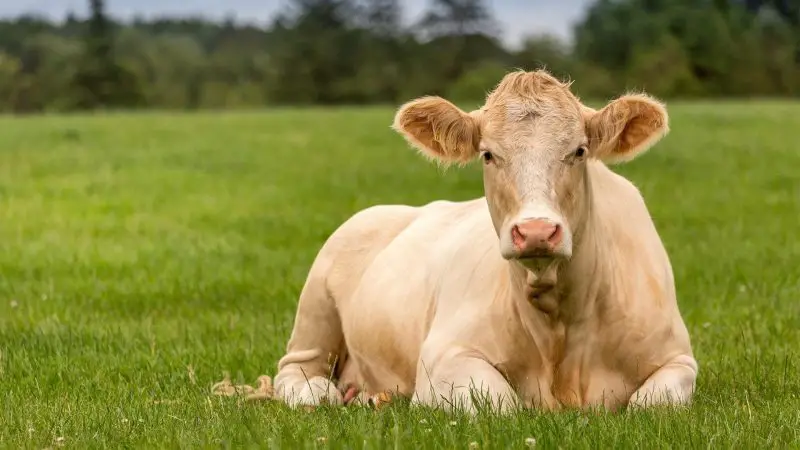
Steaks are acquired from a few muscles namely the tenderloin, ribs, and short loin. These muscles don’t go through a lot of exercise.
Also, they don’t have connective tissues which require a long period of cooking. That’s why they are acknowledged as the most tender beef parts. They’re tastier as well because there’s a lot of marbling.
The best part is that they’re ready for consumption in just a short time. Only intense heat can char and turn them brown to be eaten rare.
Factors Influencing the Number of Steaks From a Cow
- Cow size – You can get more meat and steak from a larger cow. A bigger size also means a good ratio of muscle to fat.
- Breed – There are beef breeds of cows that provide more steak than the dairy breeds.
- Processing method and cuts – The number of cuts may increase or decrease as it depends on the processing method and the kinds of cuts.
- Cut size – There will be fewer steaks when you make big cut sizes. When you make the cut smaller, there will be more steaks.
Beef Breeds for Best Steaks
Holstein Friesian
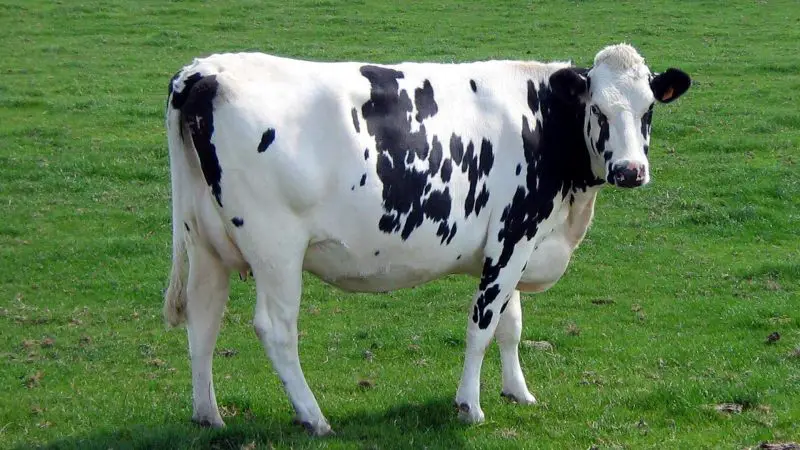
Holstein Friesian is one of the excellent beef breeds in the United States. Although there’s a decrease in milk production because of inbreeding, an increase in protein and fat compensates for it.
- Appearance: Large, stylish color pattern
- Lifespan: Six years
- Size: 1,500 lbs; 58 inches tall until the shoulders
- Color: Red and white or black and white
- Characteristics: Distinct color markings
Angus
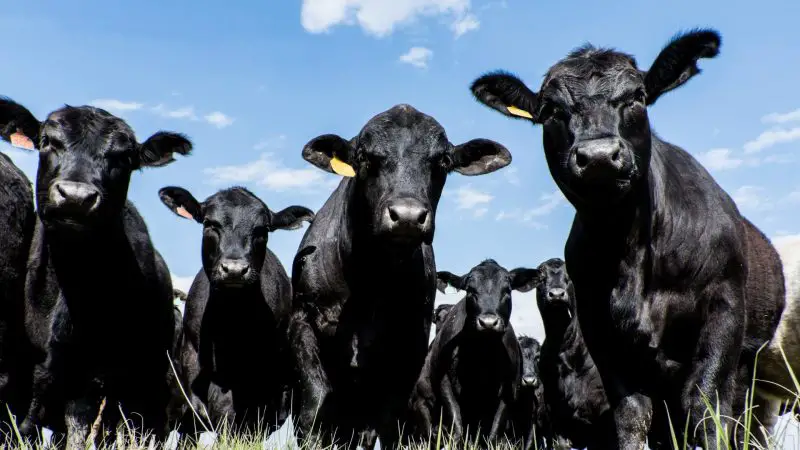
Angus is the most popular cow breed in the United States because of its nicely marbled, premium meat. Nonetheless, it’s originally from Scotland’s Angus and Aberdeen counties. 98% of the Angus cattle body can be used as meat or byproducts.
- Appearance: Hornless, small upturned ears, refined head, moderate frame
- Lifespan: 10 – 12 years
- Size: Medium to large; average weight is 1,200 pounds
- Color: Solid black and white on the udder
- Characteristics: Hardy, strong, calm temperament
Hereford
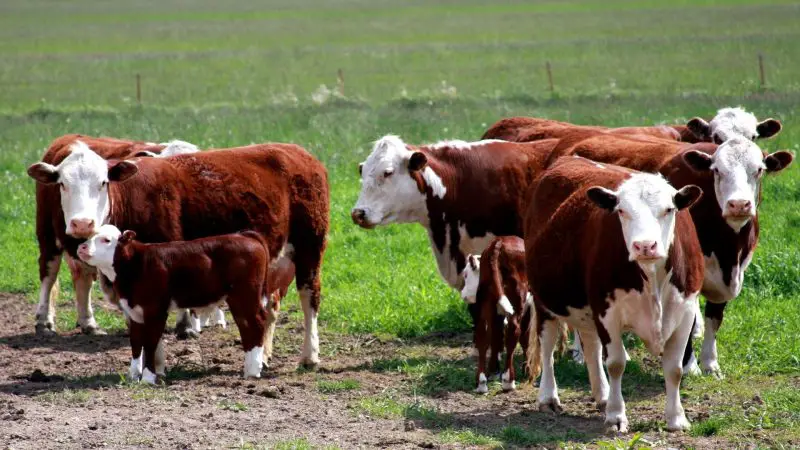
This is a British breed that comes from Herefordshire, England. It’s hardy since it can adapt to various climates. It produces high-quality, tasty steak.
- Appearance: 51% white, white markings on the sides of the body, shoulders, and hips
- Lifespan: Average of 4.2 years based on a study
- Size: 1,800 lbs (male); 1,200 lbs (female)
- Color: White and brown
- Characteristics: Muscular, moderate length
Charolais
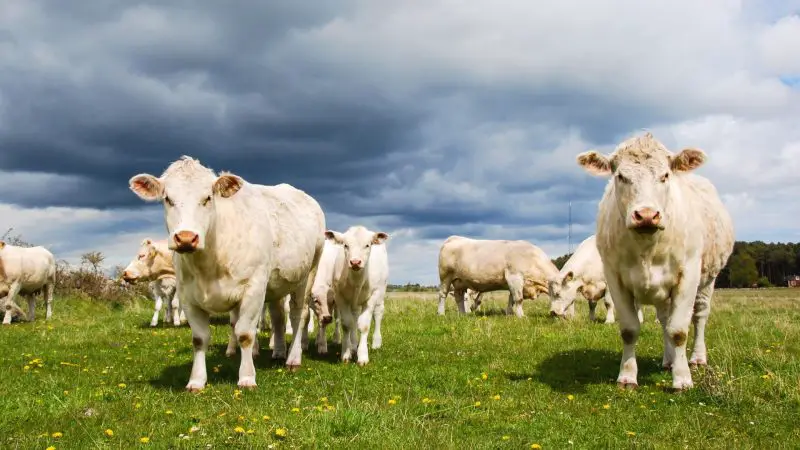
The meat of Charolais is as pale and marbled as Angus but with lesser fat. It’s one of the oldest French cow breeds as it’s believed to have been around since 878 AD. It’s regarded as valuable for breeding purposes and beef production.
- Appearance: Broad head, polled or horned, pink muzzle, pale hooves
- Lifespan: 15 to 20 years
- Size: Medium to large, 2,200 lbs to 3,600 lbs (male), 1,500 to 2,600 lbs (female)
- Color: White, cream
- Characteristics: Heavily muscled, late maturity, outstanding growth rate, good feed conversion
Shorthorn
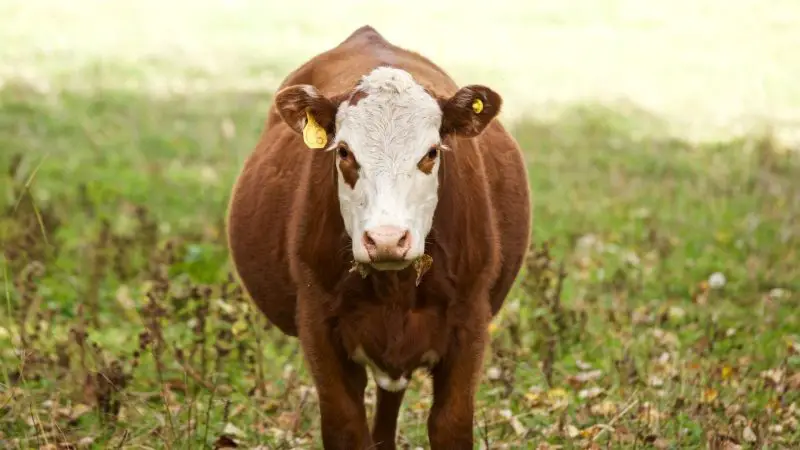
Shorthorn or Durham is raised for high-quality meat with superb tenderness and marbling. It’s solely the roan-colored modern cattle. This breed is the perfect candidate for an extensive and organic way of farming.
- Appearance: Blocky conformation, short horns, polled or horned,
- Lifespan: Up to 8 years
- Size: 1,800 lbs to 2,200 lbs
- Color: White, roan, and red
- Characteristics: Good feed conversion, relatively higher growth rate,
Scottish Highland
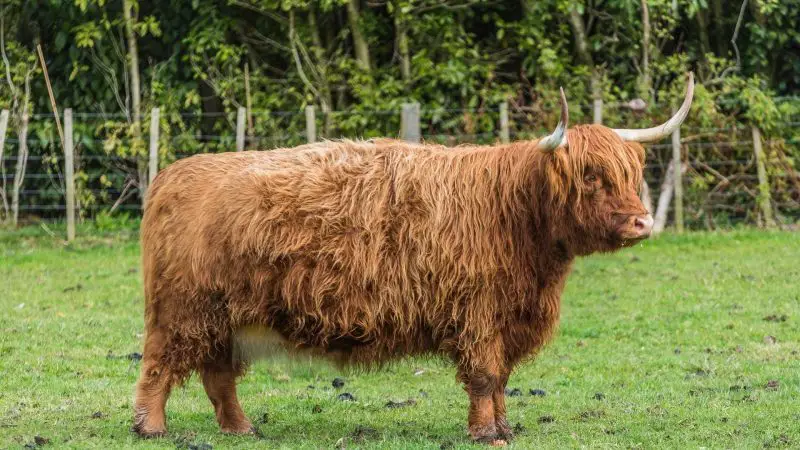
As its name implies, this breed is originally from the remote and rugged Scottish Highlands. It contributed to the progress of the cattle industry of North America.
Thus, it’s found everywhere on the continent. This breed takes pride in its lean, marbled, and flavorful meat. It meets the market demand for premium-quality meat.
- Appearance: Flowing, shaggy coat, long handlebar-like horns,
- Lifespan: Up to 20 years
- Size: 92l bs to 2,204 lbs, shoulder height: 2.95 ft to 3.6 ft
- Color: Red
- Characteristics: Even-tempered, has superior intelligence and easily trained, disease-resistant
Galloway
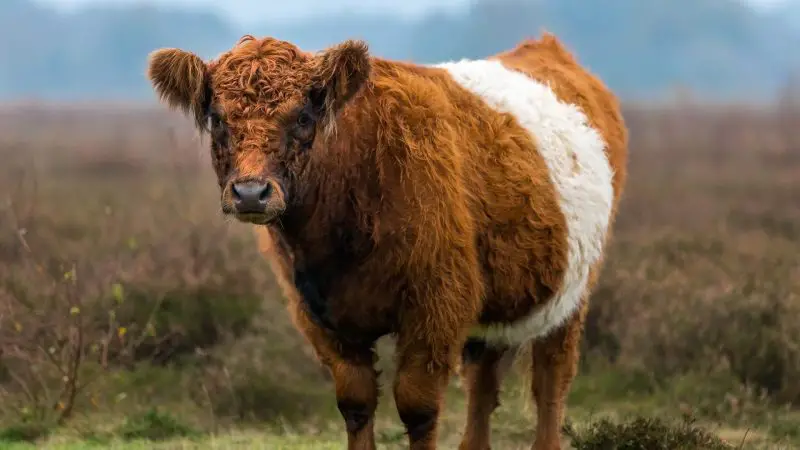
It’s one of the ancient cattle breeds. But the tenderness, juiciness, and sweetness of its meat are still enjoyed at the present. In terms of raising this breed, it can reach maturity through grass or grain feeding. Therefore, its economic value is undeniable.
- Appearance: Long coat, has a white belt that circles around the body, has the smooth poll
- Lifespan: 17 to 20 years
- Size: 1,700 lbs to 2,300 lbs
- Color: Black, red, dun
- Characteristics: Very docile, courageous, hardy, vigorous
Brahman
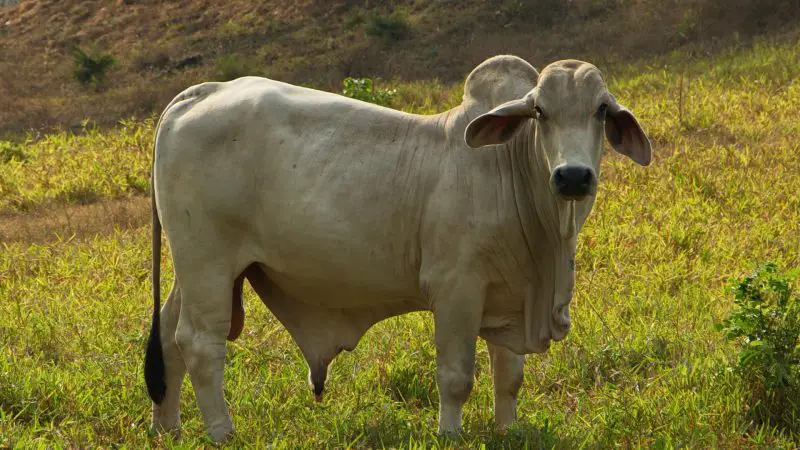
Native to India, this is considered as ‘The sacred cattle’. It was brought to the USA to improve the tenderness of its meat. Based on the progeny records of agricultural research in Florida, the genetic control on marbling and high yield are successful.
- Appearance: Has a noticeable hump on the shoulders, loose skin folds, shielded eyes, droopy ears, short coat
- Lifespan: 15 to 20 years
- Size: Medium; 1,600 lbs to 2,400 lbs
- Color: Black, red, light to dark gray
- Characteristics: Inquisitive, intelligent, shy
Simmental
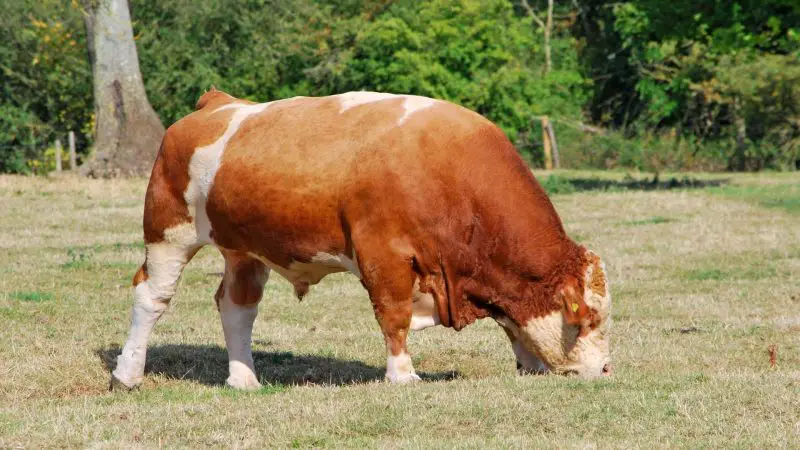
This breed is originally from Switzerland then distributed to other continents. Compared to other European cattle breeds, it’s leaner and heavier. The waste fat is also lower. Thus, it’s no wonder that there’s a lot of meat yield.
- Appearance: White patches, well-muscled, strong bones
- Lifespan: 10 to 12 years
- Size: Large frame 1,500 lbs to 2,800 lbs, height: 135 to 165 cm
- Color: Dark red, yellowish-brown to straw color
- Characteristics: Good temperament, high milk production
Limousin
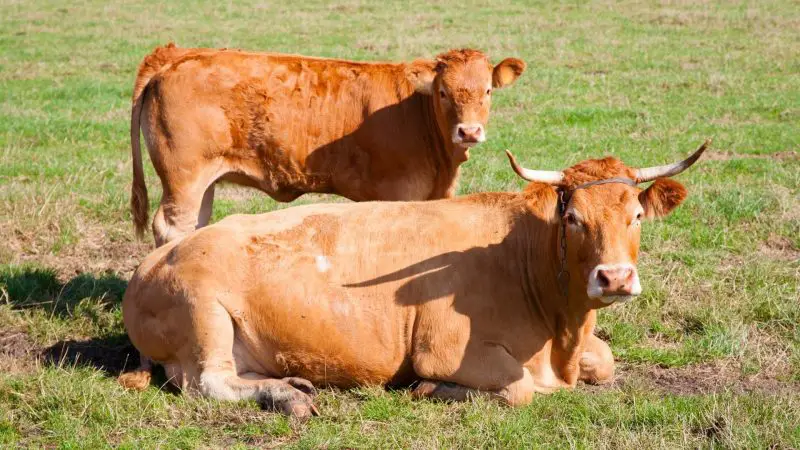
Hailing from France, these cattle mature early. Even though it’s still young, it can provide lean meat with a small portion of bone and fat. It doesn’t fail to meet the demands of beef supply in supermarkets.
- Appearance: Has large, strong bones, with horns, has a broad forehead and muzzle
- Lifespan: Around 8 years
- Size: 1,400 lbs to 2,200 lbs
- Color: Golden red
- Characteristics: High fertility, good milking ability
Figuring Out Number of Steaks You Can Get From a Cow
You can figure out the number of steaks that you can get from a cow by getting the dressing percentage. The formula is the weight of a hot carcass divided by the weight of a live animal multiplied by 100. Here’s an example calculation for 1,200-lb cattle with 750 lbs hot carcass:
(750 divided by 1,200) x 100 = 62.50 % or round off to 63% (remaining carcass)
Almost 40% was lost in this calculation. While the 63% of 1,200 lbs give you 756 lbs, another 4% will be deducted from cooler shrinkage. 726 lbs of meat are left. Moreover, 30% to 40% are gone after discarding the fat and bone. Eventually, there are only around 470 lbs left to keep in the freezer and they can be divided into:
- Flank – 4%
- Round – 24%
- Short loin – 8%
- Sirloin – 9%
These numbers are estimated as the breed and fabrication choices can affect the finished meat cuttings.
Number of Steaks From a Quarter Cow
Here are the steaks that you can get from a quarter cow:
- Rib – 7 lbs
- Round – 8 lbs
- Sirloin – 8 lbs
- T-bone – 8 lbs
- Tenderloin – 1 lb
- Fajita – 2 lbs
Summary
With several beef breeds, you can get various numbers of steaks or meat parts. Aside from breed, cows are in different weights as well. The number of cuts is not always the same as there are factors that get in the way like cooler shrinkage and getting rid of fat and bones. It’s best to be familiar with the exact steak parts to be familiar with their taste and ideal way of cooking.
List of Sources
The Effect of Inbreeding on Holstein-Friesian Breed
How Much Meat to Expect From a Beef Animal: Farm-Direct Beef
